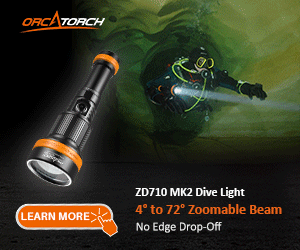- Messages
- 198
- Reaction score
- 16
- # of dives
- 2500 - 4999
Here's a shot I took in May of 2010 of a piece of brain coral, using an E-P1 camera, which has the same sensor as the E-PL2. Settings were ISO 400, 1/90, F/8.0, and two strobes:
Here's a shot I took in April of 2008, using a Fuji F30 (not as high-end as the XZ-1, but a fairly high performance compact with full manual controls) with an Inon macro lens. Settings were ISO 400, 1/100, F/8.0, and a single strobe:
Do you see the difference? The camera with interchangeable lenses had a dedicated macro lens (in this case a Nikonos 80mm lens with close-up kit), and I was able to get much better magnification without any loss of quality.
I loved my old F31d (actually I still use them for my DUP course work!) but now they are old and actually a controlled and more useful comparison is easy to do at dpreview link
Olympus XZ-1 Review: 9. Compared to (JPEG): Digital Photography Review
that has a widget to compare crops at different ISO. I would not expect to use anything higher than 100 ISO on most of my macro shots (not 400 ISO).
Compacts have little to envy to the larger 4/3 sensors at low ISO settings. The XZ1 has also the ability to use a very fast lens and achieve both great MACRO DOF control all the way up to 112mm focal length (you get up to 84mm on the EPLx kit lenses) without any external wet lenses. Actually a fast F2.5 112mm focal length is quite useful for some critters (the XZ1 will focus up to 30cm at that soom setting!).
With some VERY close inspection on some very large A2 and maybe A3 prints you may get better results with the EPL system but otherwise... With the cost of the XZ1 and UW case you pay as much as the only current macro lens for the EPLx system and easier to switch on the boat!



